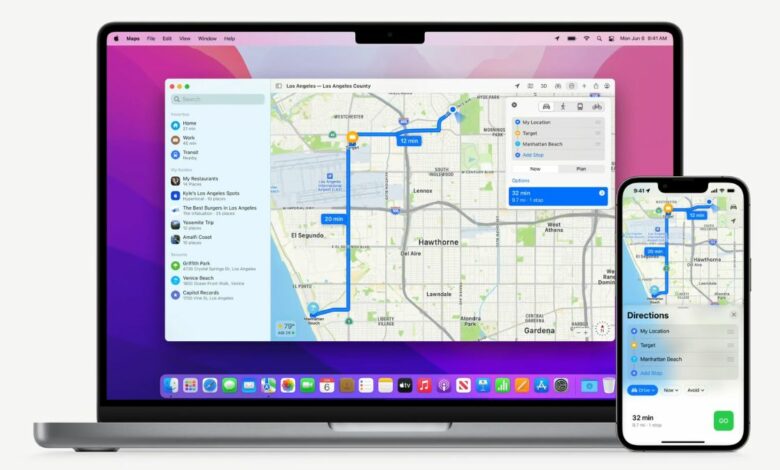Apple Maps is getting a web interface in public beta with these features

Apple Maps rolled out to the web in a public beta on Wednesday. Users can now get directions, view routes, check business listings, and view phone numbers and addresses from their smartphone and desktop browsers. Apple says Maps on the web is currently available in limited languages and platforms, with support expanding in the coming months. The app was recently updated with custom 3D landmarks in Paris ahead of the 2024 Summer Olympics, which kick off on July 26.
Apple Maps Web Interface Beta Rolls Out
In a blog afterThe company revealed that Apple Maps on the web is now available in public beta. It can be accessed via the URL beta.maps.apple.com. It has similar functionality to the Apple Maps app on the company’s devices, allowing users to find directions, explore places, view and leave reviews, and shop and eat by finding places nearby. The app will gain even more features in the future, including ‘Look Around’.
![]()
Apple Maps on the web
Apple launched Maps on the iPhone in 2012 as a competitor to Google Maps. Since then, the platform has been updated with features and improvements, including offline navigation, multi-stop routing, detailed city maps, cycling routes, and electric vehicle (EV)-ready routes. Until now, it has been unofficially available on the web via the Maps API used by developers. However, it has now officially rolled out in beta.
According to Apple, any developer, including those using the MapKit JS API, will be able to connect Maps to the web so that users can get directions, explore places, and more. This Javascript-based API lets developers embed interactive maps into their websites on platforms such as Android and iOS.
Google Maps, its biggest competitor, got a web interface in February 2005. In 2008, it was introduced on a mobile platform with the arrival of Google Maps for Android.
Availability of the Apple Maps web interface
Apple says Maps on the web is currently available only in English. It is compatible with Google Chrome and Safari on iPad and Mac, and Edge and Chromium-based browsers on Windows devices. The iPhone maker has confirmed that it will roll out support for additional languages, more browsers, and other platforms in the future.




